The Florence Biennale Internazionale dell’Antiquariato (BIAF) is one of the most prestigious events in the world of art and antiques, which has always stood out for the exceptional quality of the works on display and its ability to attract collectors, experts and enthusiasts from every corner of the planet. In the 33rd edition, scheduled from Sept. 28 to Oct. 6, 2024, the organizers have, as always, offered a careful selection of masterpieces from different eras and artistic schools, ranging from painting to sculpture, through furniture and decorative arts.
This year’s event not only celebrates the timeless beauty of works of art, but also represents an important opportunity for collectors to get closer to the world of antiques without necessarily having to deal with mind-boggling investments. While it is true that very high-value pieces can be found at BIAF(article with highlights from this year’s edition here), there is also a surprising variety of fine works accessible to a broader public, with prices starting at relatively low figures. Prominent among these are a number of treasures that, while staying below the €20,000 threshold, can boast considerable historical and artistic relevance.
While often evoking images of elitist and inaccessible collections, ancient art can in fact reveal genuine gems even to those without unlimited budgets. The galleries at the Biennale, many of them among the most internationally renowned, bring with them a selection of pieces carefully chosen to meet the needs of an increasingly discerning and diverse market. These objects, although they do not reach the prices of the more monumental works, are certainly not to be considered minor: on the contrary, they are works of art with their own uniqueness, capable of embellishing any collection. We have selected ten of them, trying to cover all the arts in the Biennale. So here is our selection dedicated to the most interesting pieces under 20,000 euros.
Inlaid caskets were a specialty of a number of workshops active between Ferrara and the Veneto that flourished between the fourteenth and sixteenth centuries. They were the subject of a recent exhibition at the Palazzo dei Diamanti and are not very easy to find on the market, especially if they are of quality. The one presented by Cantore is attributed to one of the best ateliers, the Bottega degli Embriachi, which began its production in the 15th century in Venice (it was opened by a Florentine, Baldassarre Ubriachi, who despite his name was decidedly lucid in promoting his activity making it one of the most fruitful in this genre of objects). Cantore presents three caskets, and this one, in addition to being the most expensive, is also the most complex and elaborate: Carthusian workmanship was an intricate carving of wood whereby individual pieces, even very minute ones as can be seen from the image, were shaped so that they fit inside a previously worked base. After all, to this day it is still said that a particularly long and patient job is a ... Carthusian work.
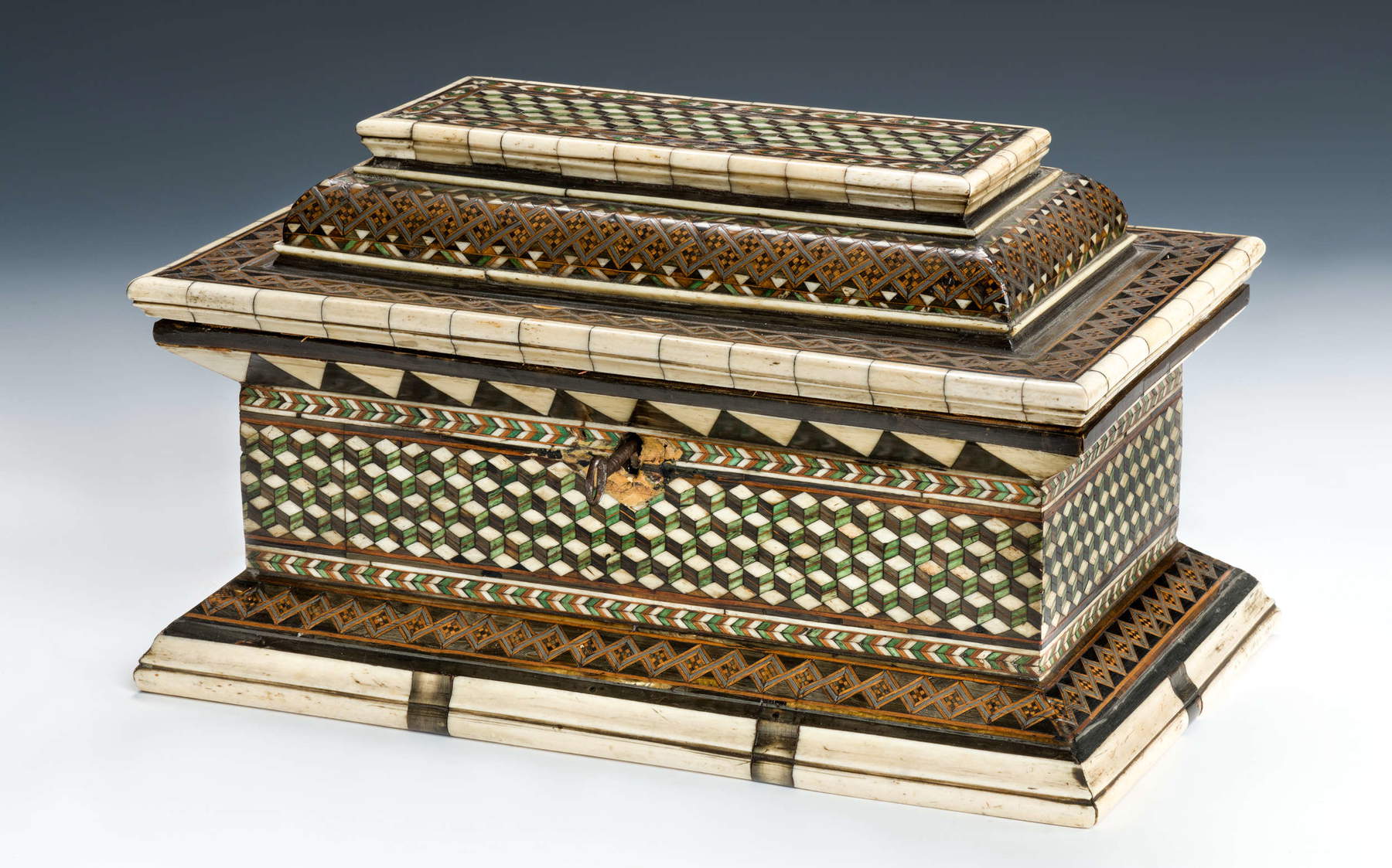
In November 1805, on his return from Vienna, where he had completed the Funeral Monument to Maria Christina of Austria inside the Church of the Augustinians, Antonio Canova passed through Florence to meet Queen Maria Luisa of Bourbon, who was to entrust him definitively with the execution of the Venus Italica to be destined for the Tribuna of the Uffizi. In Florence, Canova used to stay with his friend Giovanni degli Alessandri, a central figure in Tuscan art politics, president of the Florentine Academy of Fine Arts and future director of the Uffizi. And it was precisely after a meal eaten at the Alessandri’s house that Luigi Sabatelli, who was among the most important neoclassical painters, draftsmen and engravers, imprinted the sculptor’s effigy on the paper with his traditional rapidity of stroke. This information and other even more detailed ones can be obtained from the inscription on the back of another version of this portrait, included in the large corpus of Sabatelli’s drawings preserved at the Galleria d’Arte Moderna in Rome: “drawn in pen by Luigi Sabatelli Florentine painter one after lunch in Casa Alessandri where the said Canova was staying while passing through Florence in the year of the Lord 1805 month of November day eighteen.” The Florentine painter, with the expressive immediacy that his style allows him, manages to fix on paper the moment when the sculptor turns toward him with an astonished air and his mouth still open, as if he had been interrupted during a conversation.
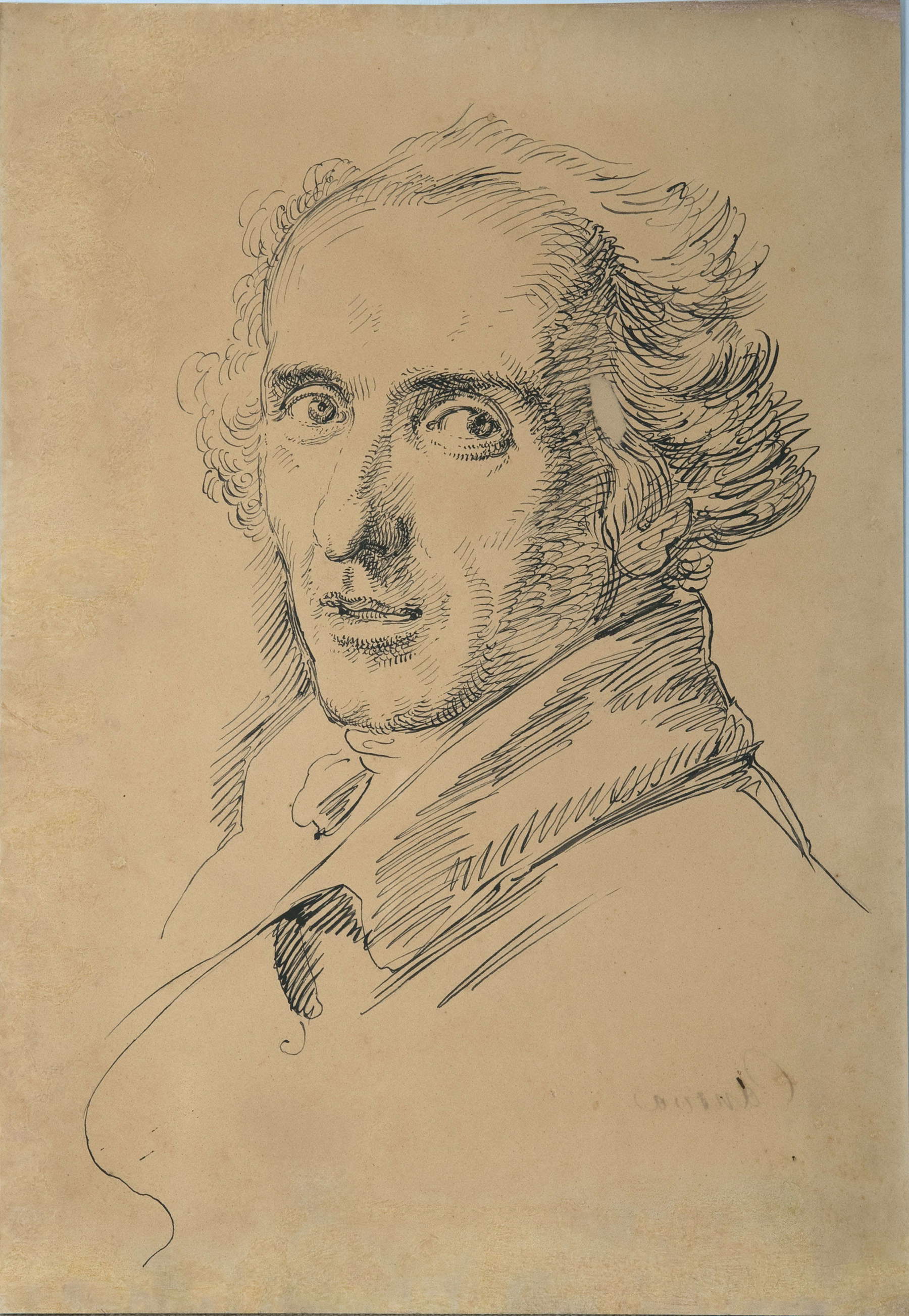
London-based Dickinson’s is among the very few galleries to price works directly on their captions, and the cost of this interesting work by Pasquale Ottino can be learned precisely from the accompanying tag. Passed at auction in England a few months ago as a work from the Veronese painter’s circle, at BIAF it is offered again as a work produced by his hand. The relatively low price is also due to the fact that, looking at the surface of the work, one can easily see the signs of the centuries that separate us from its execution, but it is nonetheless a fine piece, an elegant and typical example of a technique that characterized the arts in Verona between the sixteenth and seventeenth centuries, oil painting on slate, a material abundant around the city, and which gave artists the opportunity to experiment with intense luministic effects in line with the tenebrous poetics of the time. Ottino was one of the most important and talented of the Veronese Caravaggesque painters, and the work presented by Dickinson closely resembles a Madonna with San Lorenzo Giustiniani and a Venetian nobleman preserved at the Dulwich Picture Gallery. The setting is identical, only the characters and the study of lighting effects change, due to the effect of a candle, which is present in the exemplar kept in England (with all that that entails) and in the one at the BIAF is not: an absence that contributes to a darker atmosphere.
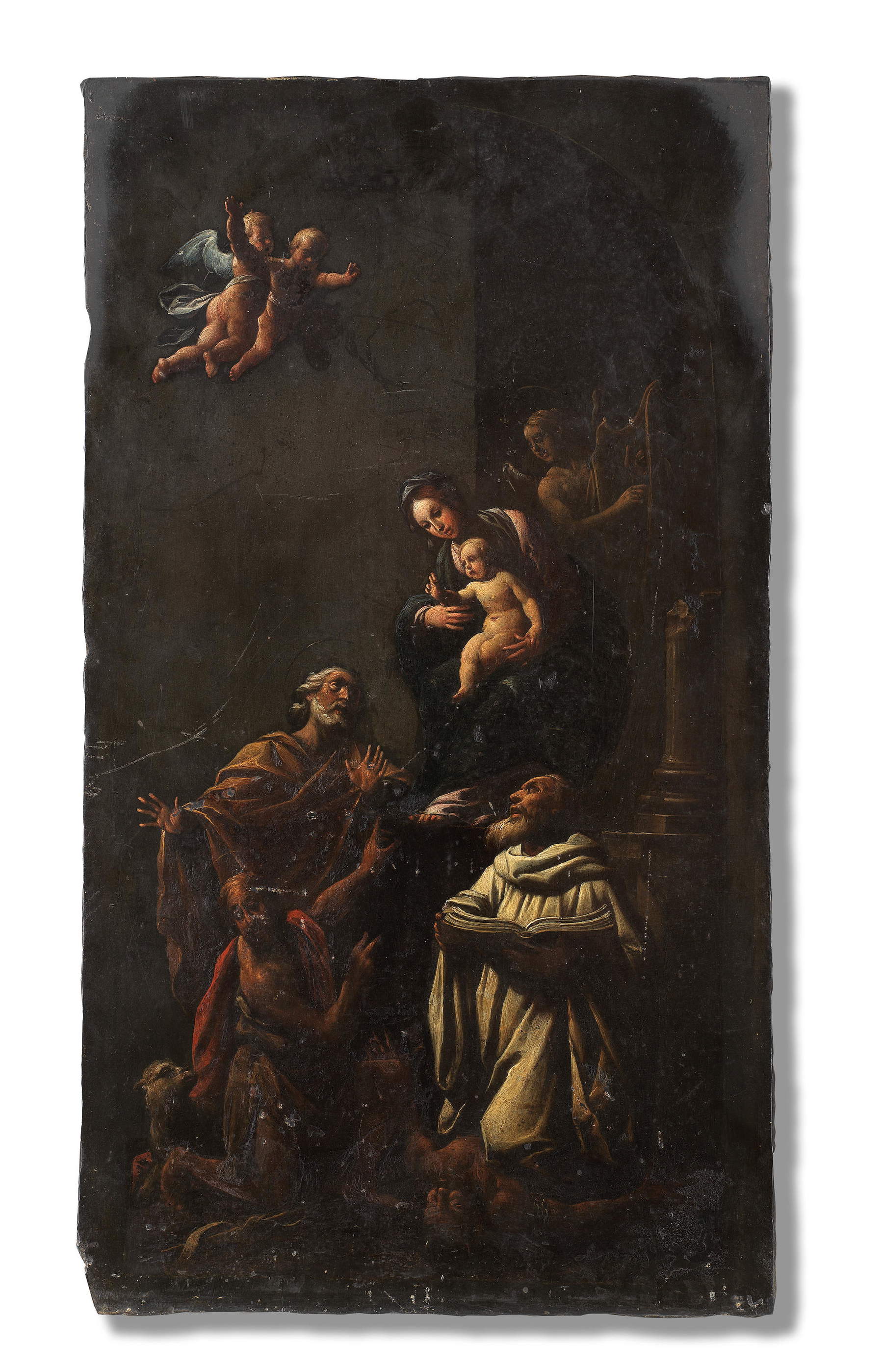
A refined and prissy object, this miniature dressing table model, offered by Michele Gargiulo Antiquario, is distinguished by the great finesse of its workmanship. Despite its small size, the craftsman who made it has reproduced with the highest care every detail of a typical toilette cabinet of the late 18th-early 19th century, without neglecting even the small Bacarat crystal flasks that were used to hold perfumes, ointments and similar products. Note also the decoration of the mirror frame and the engravings on the mother-of-pearl decorating the top and drawer. Definitely an object for true amateurs of the genre, so not for everyone, but not easy to find either.
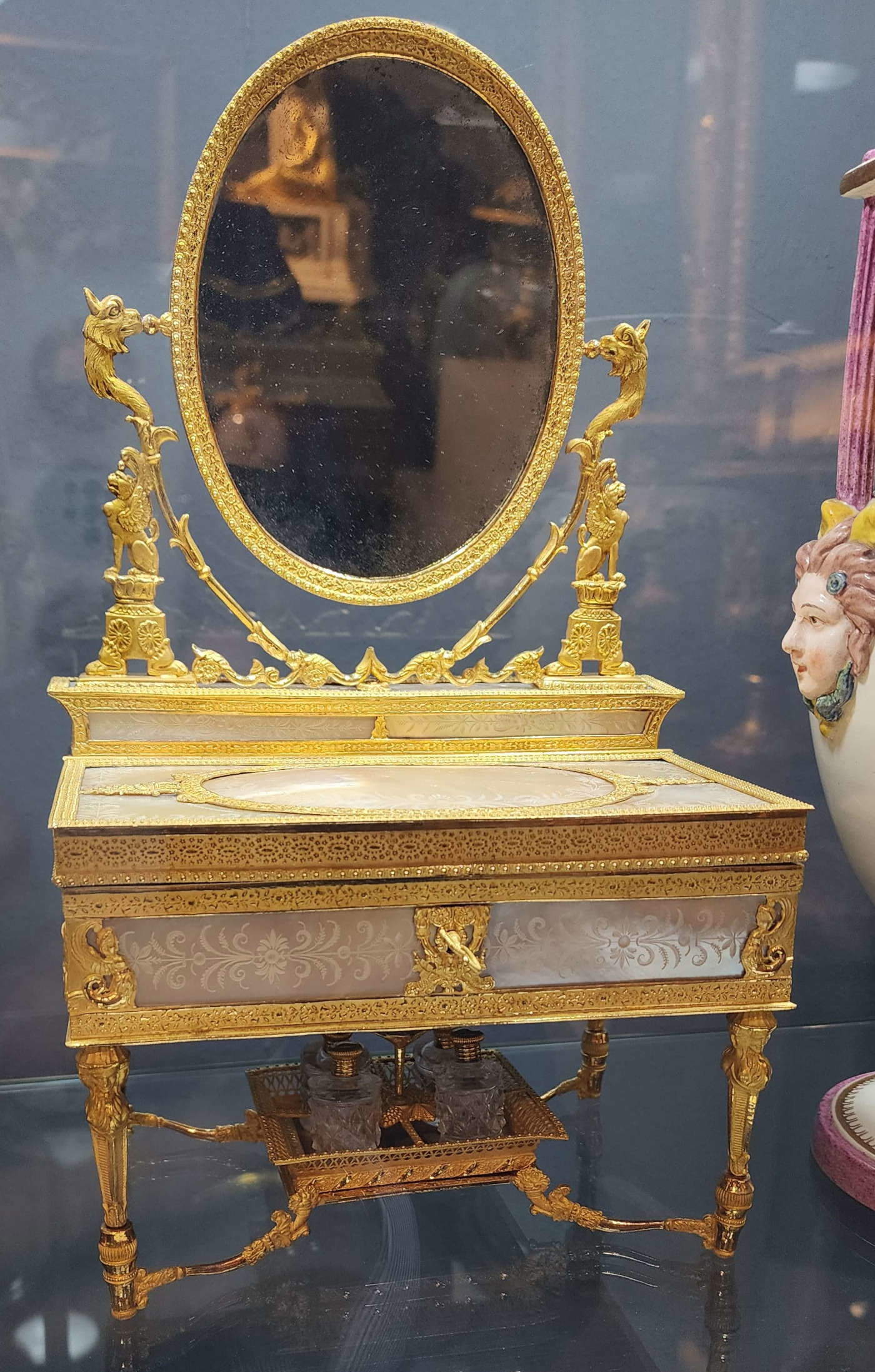
Prominent among the varied group of Macchiaioli was the Florentine Raffaello Sorbi, who began as an academic painter but then veered toward the new language of Banti, Fattori, Signorini and colleagues, without, however, ever completely abandoning his ties to a more traditional style of art. In particular, Sorbi distinguished himself for a production of small oils on panel, just a few centimeters in size, which usually depicted trees, woods or scenes immersed in these contexts: they are among the most unique of his production and are much sought after by collectors, difficult for them to go unsold when they come out at auction. Giacometti offers several of them in his booth, including this painting Among the Rows of Poplars , which depicts a hunter with his dog in a forest and is appreciated for its ability to capture the impression of a lively scene, enhanced by Sorbi’s vivid palette that is at its best even in small formats. Moreover, the work in question was published in the Catalogue of Nineteenth- and Early Twentieth-Century Italian Art.
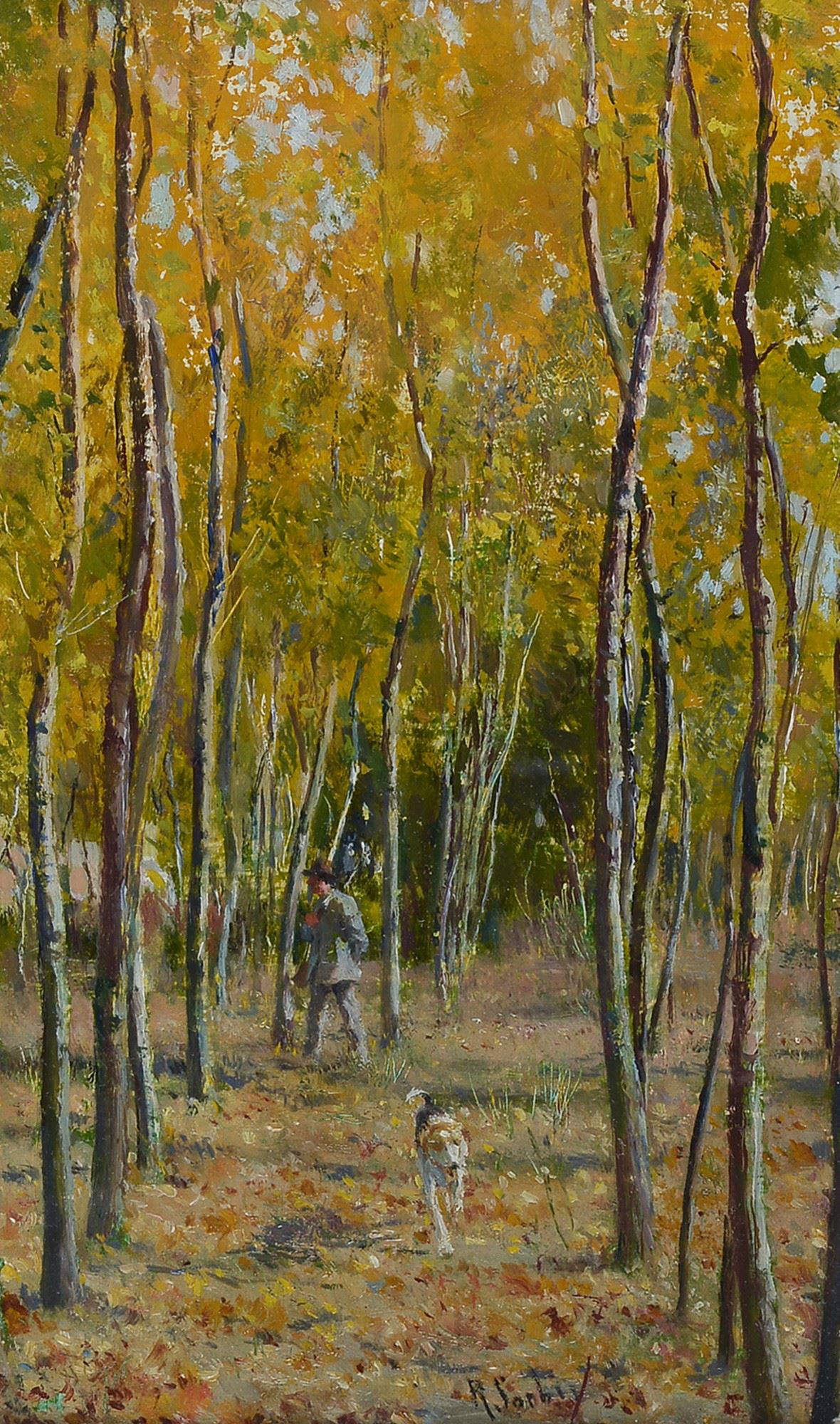
Giuseppe Gambogi was one of the sculptors most appreciated by the Tuscan upper middle class at the end of the 19th century and, in the beginning of the 20th century, he was able to update his manner on the Art Nouveau taste without disdaining a certain dose of Orientalism. Today his largest works can reach quotations of even tens of thousands of euros. TheOdalisque presented by Robertaebasta is somewhat of a small summa of the Pisan sculptor’s art in the early 20th century. A fine work in alabaster, bearing, moreover, the signature under the base, it stands out in the context of a larger production by the Tuscan artist by virtue of the fact that here Gambogi decides to skillfully combine different materials, including alabaster, which gives the work a lightness not so easy to find in his corpus.
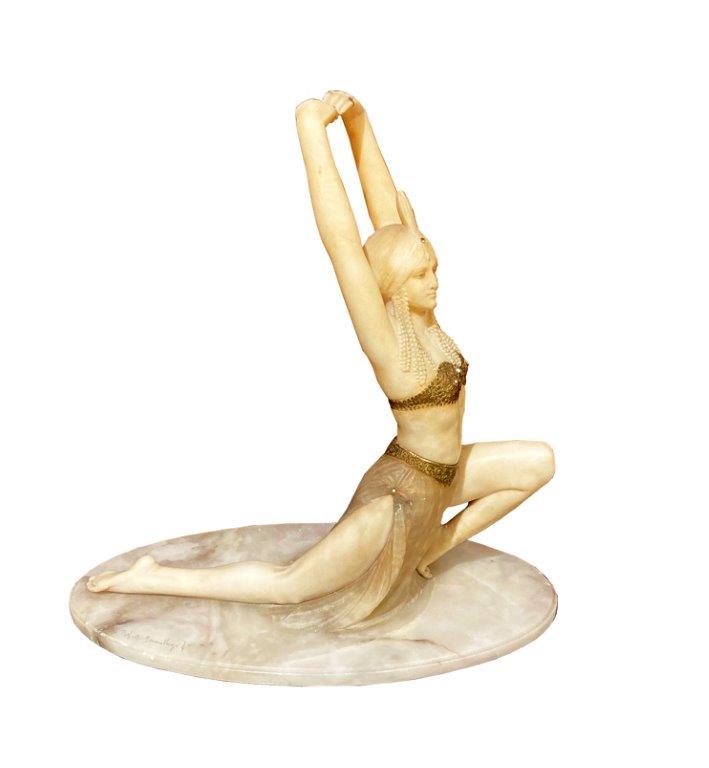
London-based gallery Lullo Pampoulides pays homage to the Biennale venue, Florence, with these two small paintings made with a typical Florentine art, commesso in pietre dure. Not only large tabletops, not only particularly elaborate compositions, but also simpler, yet no less interesting or ingenious, squares: just see how the anonymous artist who executed these two parrots juxtaposed the small stones appropriately shaped (this involves the technique of commesso, similar to mosaic: a design was first traced, after which it was filled in by shaping piece by piece the colored stones, which were then juxtaposed with minute joints) to recreate the effect of the variety of colors in the parrot’s plumage. Note then also the fineness of the fruits: in fact, the natural veins of the stones were exploited to suggest the effect of the shading of peaches, or the bruising of pears. Two objects of small size, but of great quality.
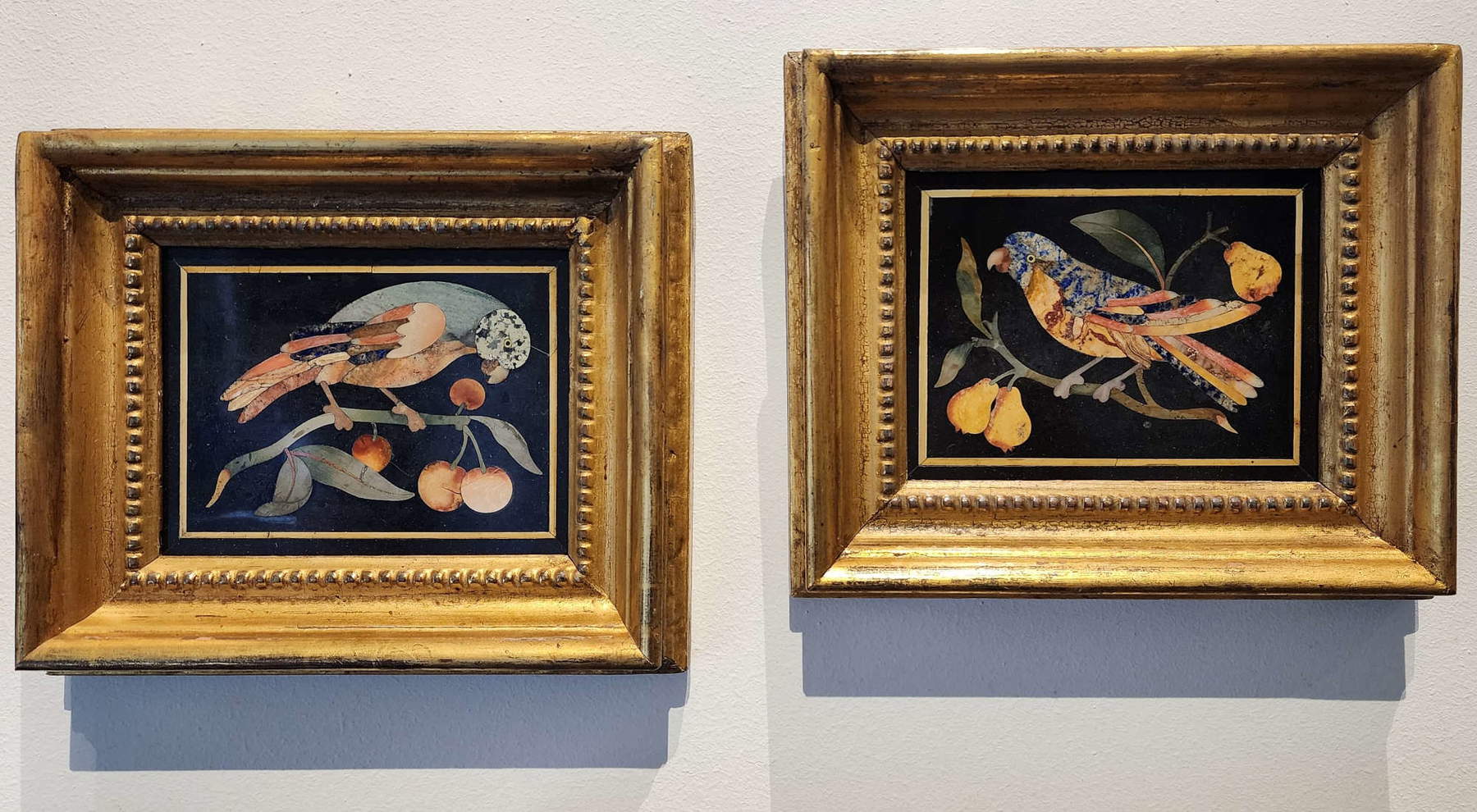
Romano Fine Art presents a series of plaster studies by the great Cuban sculptor Agustín Cárdenas, coming directly from his studio. Cárdenas, a descendant of African slaves who were deported to the Caribbean, arrived at a very personal figure that fused European avant-gardes (from Hans Arp to Brancusi) with the memory of his ancestors, making him one of the most important artists of the “negritude” movement. In the last years of his career, before returning permanently to Cuba, he lived and worked in Versilia, and it is from here that these plaster casts made in anticipation of large works in marble or bronze come, such as Le coq preserved at MudaC in Carrara, a work in marble to which the plaster cast presented in BIAF would seem to relate.
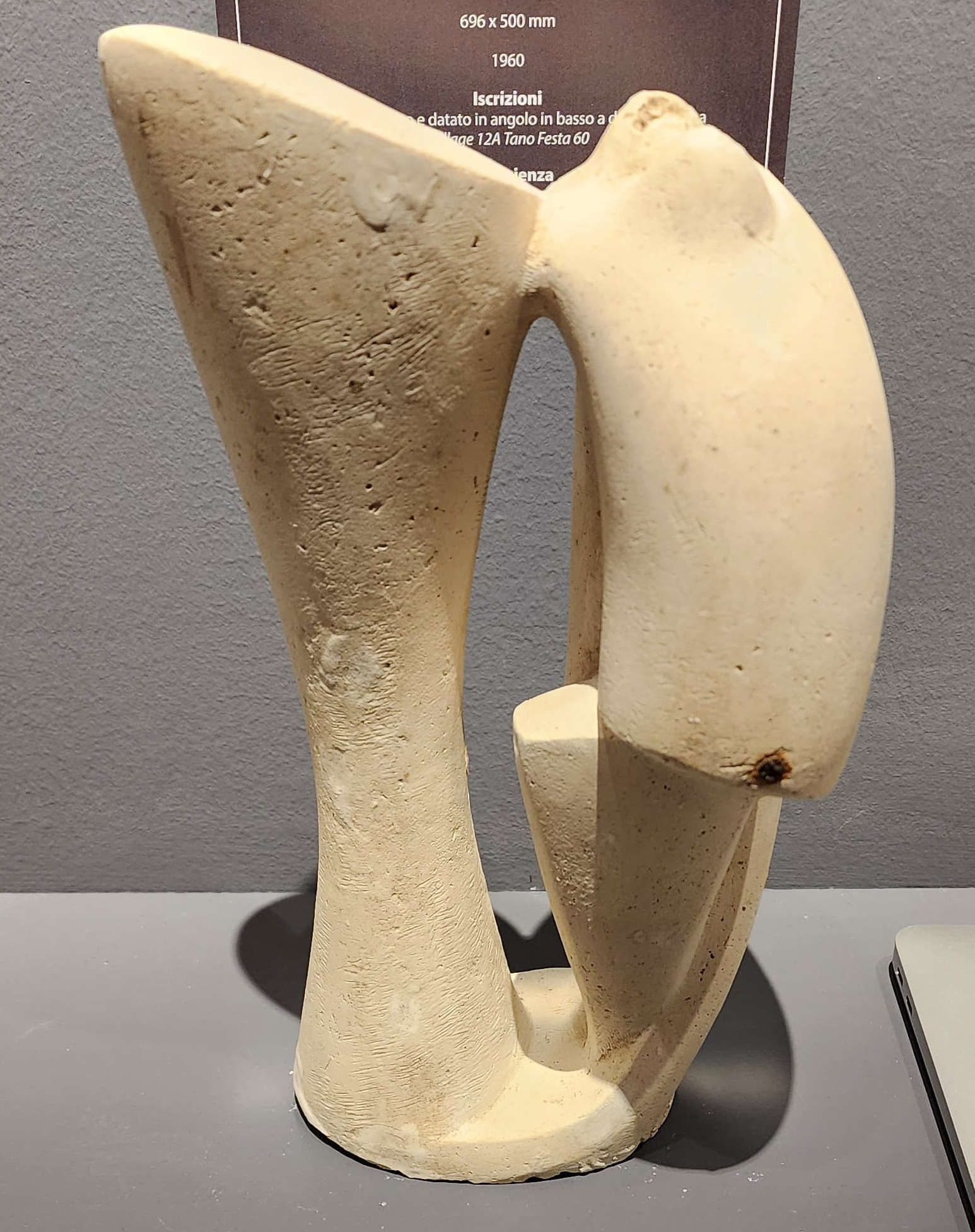
At the booth of Mr. and Mrs. Masoero’s Secol-Art gallery is an original production cel from Disney’s The Jungle Book (1967), depicting Baloo the bear. A cel, in the old animation techniques, is a thin sheet of plastic (the name is a contraction of “celluloid”) on which the film frame was painted in tempera, acrylic or other paint. They were painted on transparent plastic as a matter of practicality: the backdrops, in fact, remained fixed, and the painters employed in the making of the scenes therefore had to paint only the moving details, which were then superimposed, frame by frame, on the background to give rise to the animation. This was long, slow and meticulous work for an animation technique no longer in use today due to the advent of digital: as a result, the original production cel’ s have become particularly sought-after items for collectors who are passionate about animated films.
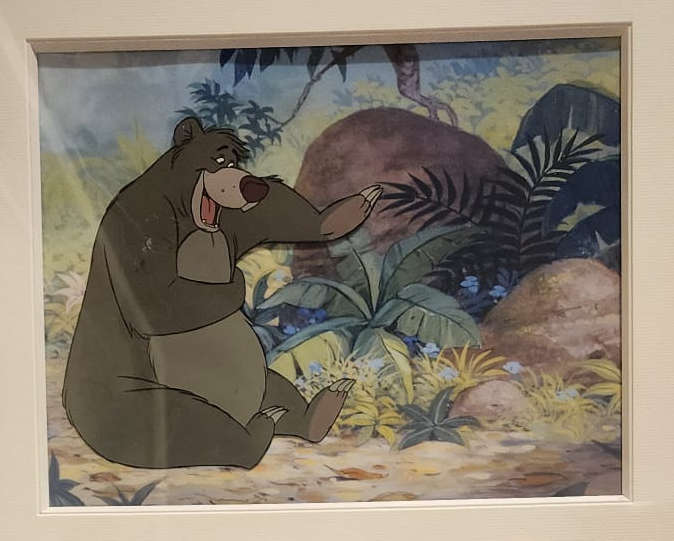
Micromosaics were objects that were particularly in vogue during the Grand Tour: produced especially in Rome, and depicting real or imaginary views of the city, they were sold to grandtourists who were looking for practical and not very expensive objects with which they could take home a souvenir of Italy. There were artists who specialized in this particular technique. The designs could be simple or particularly elaborate, but the dimensions generally did not exceed a few centimeters. The micromosaic sold by Maurizio Brandi seems to depict a precise view of the Imperial Forums: on the right the Temple of Saturn, in the center the Temple of the Dioscuri, and on the left the Arch of Septimius Severus. The traveler who could buy this item in early nineteenth-century Rome thus knew that he had with him a piece of the Forums, one of the most characteristic views of Rome, reproduced with a simple but tasty mosaic.
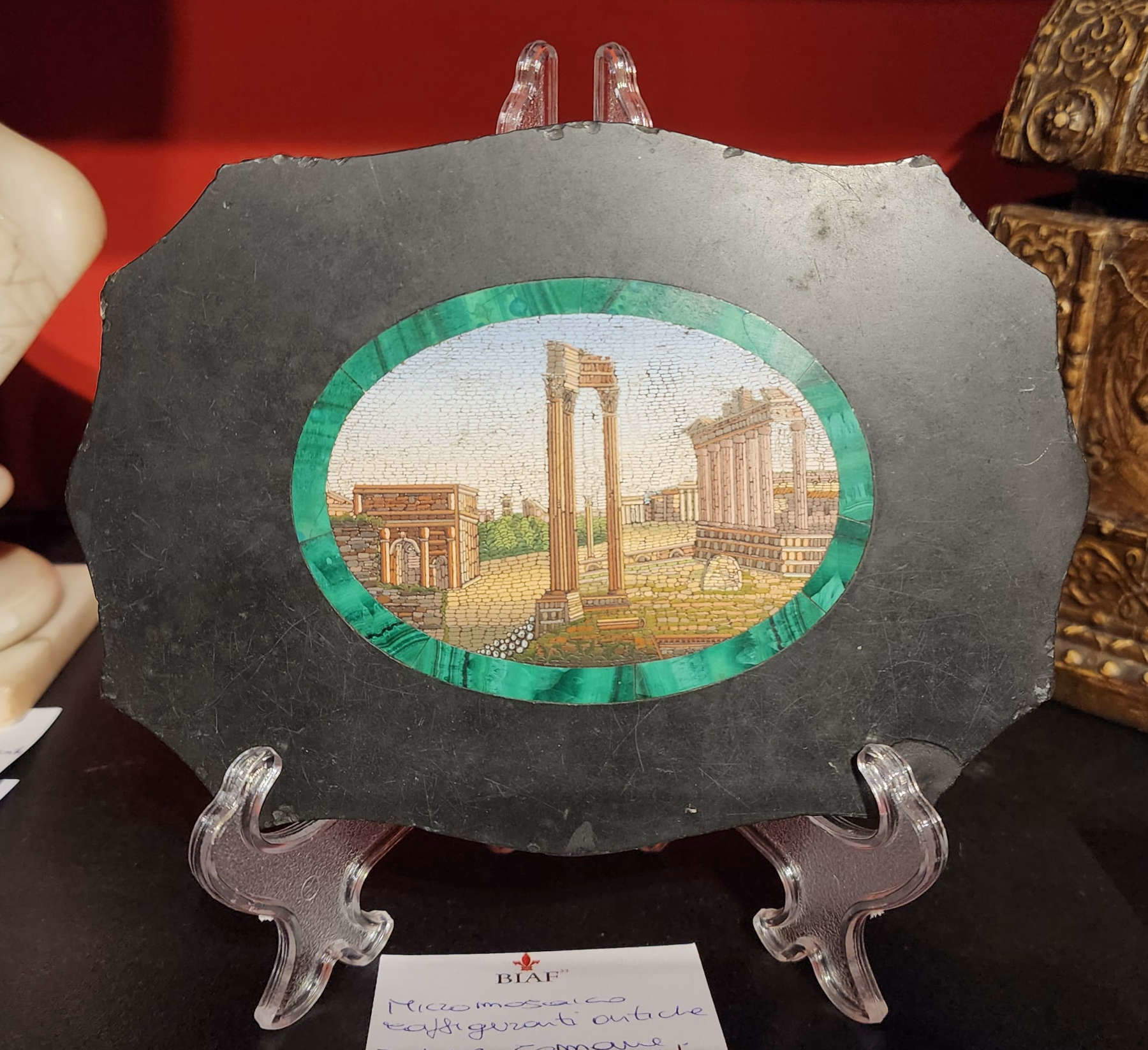
Warning: the translation into English of the original Italian article was created using automatic tools. We undertake to review all articles, but we do not guarantee the total absence of inaccuracies in the translation due to the program. You can find the original by clicking on the ITA button. If you find any mistake,please contact us.